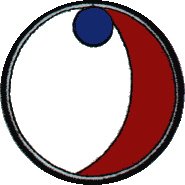Contrary to most popular belief, Yaw-Yan is not purely a full-contact no-holds barred sport martial arts. It is a complete martial training with body-mind coordination and test of enduring indomitable spirit. More than just physical training, it also involves the mental disciplines of focus, concentration, alertness, flexibility, stamina, speed and continuity. Students train for real confrontation and actual fights -- on or off the ring. Advanced Disciples have to go through a rigorous ritual of practice and discipline consisting of actual full-contact sparring, bag hitting, and flexibility exercises. The elbows, knees, and shin are utilized in much the same way as in Muay Thai.
Yaw-Yan practitioners have to learn 40 basic kicks, advanced disciples have to be able to execute and apply complexed advanced kicks requiring great dexterity, flexibility, and mastery. Most of these advanced kicks are trick kicks which always caught unsuspecting opponents by surprise.
Yaw-Yan practitioners are also adept with Philippine bladed weaponries such as the balisong and bolo. Bladed weapons are mere extensions of the hands. The forearm strikes, elbows, punches, palms strikes, and hand movements are empty-hand translations of the bladed weapons. There are 12 bolo punches which were patterned from Arnis, the Philippines' very own armed art. These punches have continous fluid striking motion quite similar to western boxing but incorporating the art of Arnis. Grappling, ground-fighting, and knife-fighting had always been a part of the Philippines' martial art and are always incorporated during the Yaw-Yan practice period. Yaw-Yan is a transformation of ancient Filipino Martial Arts and a Modern Competition Sport with high emphasis on practicality and actual confrontation.

The Yaw-Yan Symbol
All lines on the seal show the non-resistance principle of Yaw-Yan. The non-opposing lines fluidly flow continuously either with others or independently on its’ own.
The first outermost black circle is thicker than the second black circle or any of the other lines. This circle signifies the infinite power that encompasses all being, no beginning and no end. This outer circle signifies God is my shield.
The second circle is white, sandwiched between the first outermost black circle & second black circle. This signifies secrecy. Everyone has its’ own weakness and strength, Yaw-Yan practitioners are not an exception to this.
The third circle is another black circle; this signifies Organization and Honor, the organization which binds all Yaw-Yan brothers & sisters together. Give due respect and obedience to our Grandmaster, as well as to your elder brothers and sisters, and be polite to everyone including your younger brothers and sisters in the art. This traditional hierarchy within the organization, common to Filipino customs and values shall be observed at all times.
The blue circle, the red ellipse, and white space are all directly connected to this third circle, this is to remind each of us that life’s most valued treasure more valuable than life itself is Honor.
There are 3 main colors inside the black circle which signifies the same meaning as the Philippines' flag - White for peace which can also mean truth or purity, Red for bravery, and Blue for loyalty.
Red signifies bravery and preparedness, always ready for what is to come. The space it occupies on the seal also stands for 40 basic kicks. This color is on a sort of elliptical or eclipsing shape. Imagine this to resemble the bamboo tree -- when young, it boasts to reach the sky, it continues on as it grows, but gradually in time as it aged it bends humbly forward. This is the same as the learning process common not only in all martial arts but life in general.
Blue stands for Loyalty and Allegiance. The space it occupies on the seal also stands for 12 bolo punches. Notice that this color is on a humbly smaller round circle than the other circles -- where it begun it continues without end. It is directly connected to the bigger circle, signifying loyalty to the organization. Yaw-Yan members are loyal to the brotherhood, the organization, and to its’ founder. When you became an advanced disciple, you were not given a belt which you can easily take off your waist, but a hot iron branded mark you carry with you wherever you go, signifying that you are a part of the whole.
All the curving lines and the colors - black, white, red and blue... stands for the creed declaration - "Yaw-Yan is my weapon."
2 comments:
hi.. my name is kim anderson. i really find yaw yan very interesting. actually, i can't comment regarding this matter that much coz it's just recently when i knew about this. i hope someone can bring me out there too.. tnx!
can someone help me regarding this matter? how can i have more ideas about yaw yan?
Post a Comment